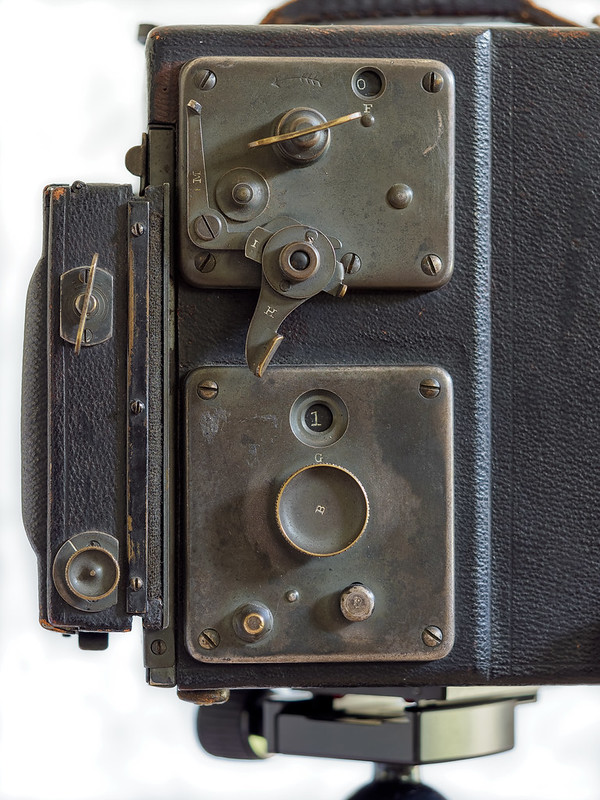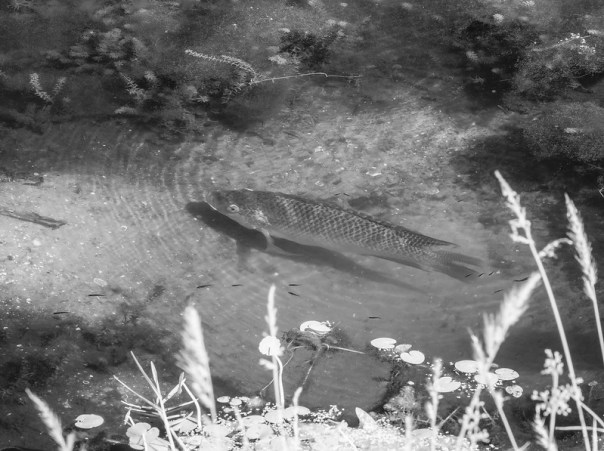Whoops – I did it again! I bought another old camera. I’d never noticed one like this before. When I looked it over, it seemed to be in good shape – too good to pass up.
It’s an Auto Graflex Single Lens Reflex made by the Folmer & Schwing Division of Eastman Kodak around 1920. The company was in operation from 1898 to 1973 and was owned part of that time by Kodak. They built a variety of models, but by the 1920s this basic design type was typical. It came in several sizes and some models used roll fill while others used sheet film. This one has a non-revolving 3 1/4″ x 4 1/4″ roll film back.
The controls work surprisingly well for a wood and metal device that’s about 100 years old. The aperture functions and the exposure times are slow, but could maybe be adjusted back into spec. Pretty amazing for a mechanical device this old!
You set exposure by changing the size of the vertical focal plane shutter opening (using the crank and window marked “F”), and how fast the shutter moves over the film (with a tension setting using knob “B” and window “G”). There’s a handy cheat sheet riveted to the viewfinder hood that translates these settings to equivalent exposure times. The range from 1/10 to 1/1000 second seems large for a camera of this era.
The lens is a Kodak Anastigmat f/4.5, with a focal length of 5 1/5 inches (just about equivalent to a 50mm lens on a 35mm full frame camera). According to the web, it was highly rated at the time.
The viewfinder is usable but dirty. I think running film through this would be difficult, since that type of roll film isn’t made anymore. But I took it out in the back yard so I could look through the viewfinder in bright light.
Here’s a close-up of an image through the camera’s lens on the focusing screen inside the viewfinder.
I enjoyed researching this and playing around with it. It’s an interesting collectible and looks good in my camera cabinet next to a couple other old Kodaks. You can find out much more about Graflex cameras on-line. Start with these links:
- Graflex reflex models at Camerapedia Wiki: http://camerapedia.wikia.com/wiki/Graflex_reflex_models
- Graflex reflex models at Camera-wiki: http://camera-wiki.org/wiki/Graflex_reflex_models
- Graflex operation / principles and instruction manuals: https://www.graflex.org/RBGraflex/
- Graflex Shooter’s Guide: https://www.filmshooterscollective.com/analog-film-photography-blog/graflex-shooters-guide-4-29
Thanks for stopping by and reading my blog. Now – go make some photos!
©2018, Ed Rosack. All rights reserved




















































